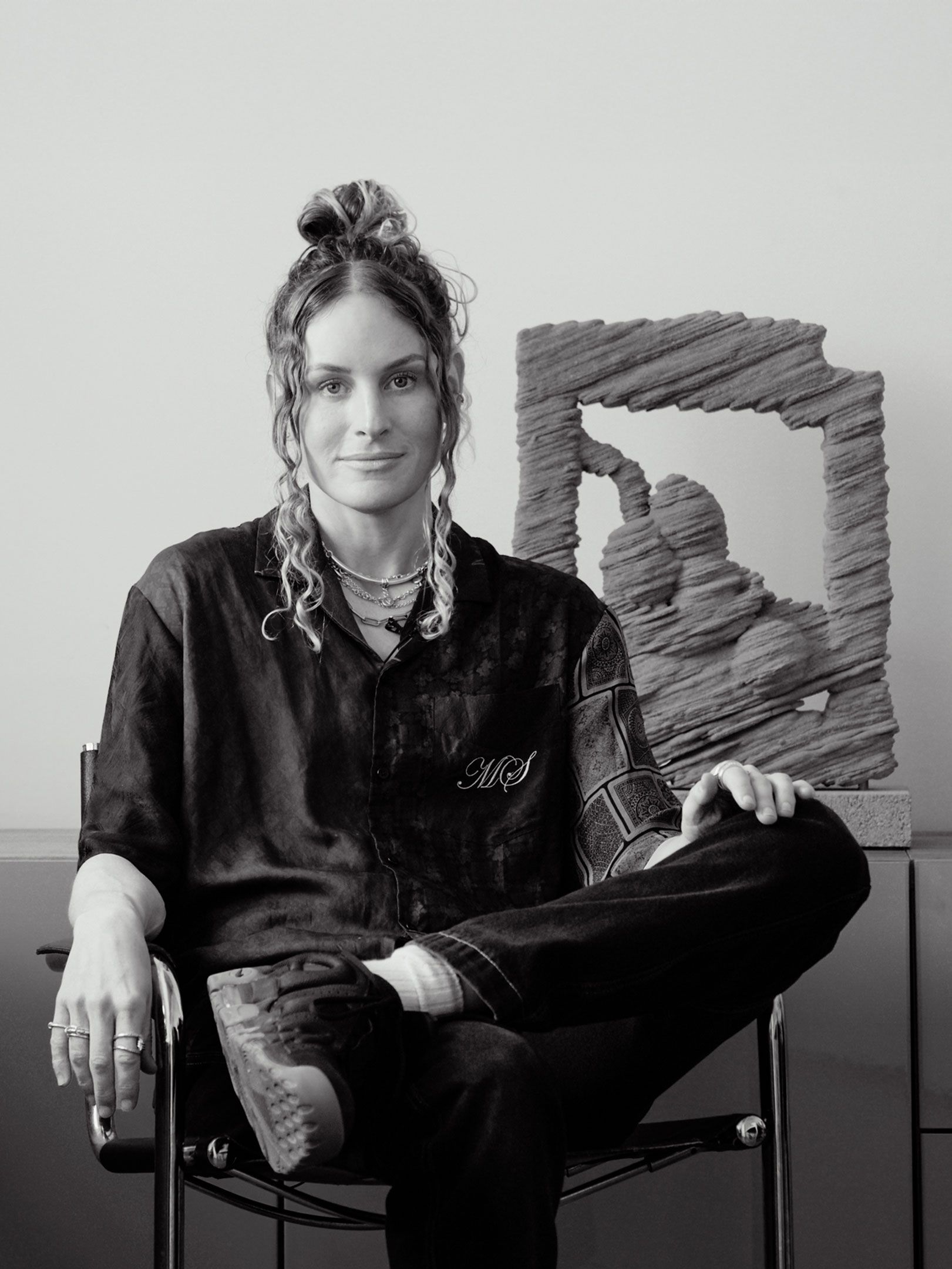Back to Journal
June 02, 2025
Pride | Dwyer's Story
Pride at Spinelli Kilcollin is personal.
It begins with our non-binary co-founder and creative director, Dwyer Kilcollin, whose identity shapes not only their design perspective—but the culture of inclusion at the heart of our brand.
This campaign honors Dwyer and the many LGBTQ+ voices across our team—sharing the identities and values that shape who we are.
"I'm an opt-out—just Dwyer"
I don’t see myself as a woman or a man, just a person. I do not identify with the gender I was assigned at birth. I’ve always felt different. Being introduced with a gender marker feels inaccurate, confining, and unnecessary. Tomorrow, I will be someone different from who I am today.
Ever since I can remember, I’ve felt trapped by heteronormative culture. The assumptions made about me feel violating and inaccurate, and I’ve always wished for an escape—a way to prevent anyone from assuming I am part of something I am not.
In the 90s, being queer was most commonly defined based on the anatomy of whom you were intimate with. Belonging seemed to require sharing the anatomy of your sex partner. What I wanted was to provide people with less information about myself, not more. Was there a way to define myself as different on my terms, rather than in relation to someone else?
When I became pregnant with my first child, everyone asked if we knew what we were having. A human, we presumed. I learned then that many friends and acquaintances needed to know so they could plan. Yves and I couldn't think of a plan that depended on the anatomy of our newborn. Eight and a half months later, in 2018, our first human was born. The following year, in 2019, California began offering the option of listing your gender as X.
I didn’t change my driver's license or my pronouns at first. Did I deserve to be an X? Similar to how I feel queerness has a specific definition—for example, sexuality—I found myself again in a place where I feared I didn’t fit into the definition of nonbinary. What are the requirements to be nonbinary? In the end, I realized there are no requirements.
My passport was issued in 2024, with a gender marker of “X.” This was the last year Americans received passports reflecting their gender identity. It is said that new US passports will be issued, reinstating the gender assigned at birth.
While I can choose any pronouns—and many invent their own—I prefer they/them. These pronouns are now part of the ever-evolving English language. The more we use them, the more natural they will become. If it were up to me, we might all use they/them when meeting someone new until we are advised otherwise. I see my choice as the closest thing to no choice at all. I’m an opt-out—just Dwyer.
Limited Edition of 100 — Available exclusively in June
A Symbol of Self. A Celebration of Pride.
Designed by Dwyer Kilcollin, the Pride Ring draws from the original rainbow flag—celebrating the full spectrum of identity with a playful, accessible expression of joy.
Crafted in homage to the evolving meaning of Pride, this piece invites everyone—community members and allies alike—to wear their truth and honor the stories that live within us all.
This is more than a ring. It's a symbol of belonging—across gender, culture, and time.

